Real-World Study Supports Avelumab Plus Axitinib in RCC
Avelumab plus axitinib was effective and safe in real-world advanced kidney cancer, with outcomes matching clinical trials, according to AVION study findings.
3D rendering of kidney cancer with organs and tumors: © Matthieu - stock.adobe.com

First-line treatment with avelumab (Bavencio) plus axitinib (Inlyta) demonstrated effectiveness and safety in a real-world population with advanced renal cell carcinoma (RCC), yielding outcomes consistent with clinical trial data. Findings from the primary analysis of the AVION study were presented at the 2025 Genitourinary Cancers Symposium.1
At a data cutoff date of July 5, 2024, among patients with advanced RCC in Belgium, Germany, Greece, and Russia enrolled in the trial who received the combination in routine clinical practice (n = 104), the median overall survival (OS) was not reached (NR), the 6-month OS rate was 89.1% (95% CI, 81.2%-93.8%), and the 12-month OS rate was 82.7% (95% CI, 73.5%-88.9%).
“Overall, results from AVION demonstrate the effectiveness, safety, favorable tolerability, and stable health-related quality of life [HRQOL] of avelumab [plus] axitinib in a heterogeneous real-world population,” lead study author Axel Stuart Merseburger, MD, PhD, and coauthors wrote in a poster of the data.
Merseburger is chairman of the Clinic of Urology at University Hospital Schleswig-Holstein in Lübeck, Germany.
Background Information
Previously, the phase 3 JAVELIN Renal 101 trial (NCT02684006) showed that first-line avelumab plus axitinib generated significantly longer progression-free survival (PFS) and higher objective response rates (ORRs) compared with sunitinib (Sutent) and had an acceptable, long-term safety profile in patients with advanced RCC. The final analysis of JAVELIN Renal 101 showed that in the overall population, at a minimum follow-up of 68 months, the median investigator-assessed PFS was 13.9 months (95% CI, 11.1-16.6) with the combination vs 8.5 months (95% CI, 8.2-9.7) with sunitinib (HR, 0.66; 95% CI, 0.566-0.769; P ≤ .0001).2 The ORRs in these respective arms were 59.7% and 32.0% (OR, 3.226; 95% CI, 2.406-4.279; P < .0001).
Additionally, outcomes from the final OS analysis in the overall population favored the combination arm, although the OS difference between the 2 arms was not statistically significant (HR, 0.88; 95% CI, 0.749-1.039; P = .0669). The median OS was 44.8 months (95% CI, 39.7-51.1) with the combination vs 38.9 months (95% CI, 31.4-45.2) with sunitinib.
The findings from JAVELIN Renal 101 supported the 2019 FDA approval of avelumab plus axitinib for the first-line treatment of patients with advanced RCC.3 In 2019, the European Commission also approved the combination for this indication.4
Despite these data and approvals, the AVION investigators noted that real-world data with the combination in clinical practice are limited.1
AVION Trial Design
The prospective, noninterventional AVION study enrolled patients being treated for locally advanced, recurrent or metastatic RCC in Belgium, Germany, Greece, and Russia who had already received 1 or 2 doses of frontline avelumab plus axitinib; these patients received further treatment with the combination during AVION. Patients needed to be at least 18 years of age, have histologically confirmed disease with any histological origin, and have an ECOG performance status of 0 to 2.
Patients received avelumab intravenously at 800 mg every 2 weeks and axitinib orally at 5 mg twice daily.
The primary end point was the OS rate at 12 months from the date of the first treatment received after informed consent. Secondary end points included the 24-month OS rate, duration of OS, PFS, ORR, duration of response (DOR), disease control rate (DCR), safety, and HRQOL.
Patient Characteristics
In total, 105 patients were enrolled. One patient did not report axitinib treatment prior to informed consent and was excluded from the analysis population.
Patients had a median age of 70 years (range, 37-87); 34.6%, 40.4%, and 25.0% of patients were younger than 65 years of age, between 65 and 75 years of age, and older than 75 years of age, respectively. Most were male (70.2%). A total of 92.3% and 6.7% had ECOG performance statuses of 0/1 and 2, respectively. Additionally, 89.4%, 3.8%, and 6.7% of patients had clear cell, sarcomatoid, and other disease histology, respectively. In total, 7.7%, 29.8%, 41.3%, and 21.2% of patients were from Belgium, Germany, Greece, and Russia, respectively. International Metastatic RCC Database Consortium (IMDC) risk scores were favorable, intermediate, poor, and missing in 26.0%, 45.2%, 12.5%, and 16.3% of patients, respectively. PD-L1 status was negative, positive, not applicable, and missing in 16.3%, 5.8%, 28.8%, and 49.0% of patients, respectively. Prior anticancer treatments included adjuvant drug treatment (3.8%), surgery (75.0%), nephrectomy (66.3%), and radiotherapy (8.7%). At baseline, the median time since initial diagnosis was 0.7 years (IQR, 0.2-3.8).
At the last follow-up, 20.0% of patients were still receiving avelumab or axitinib, 20.0% of patients had discontinued treatment and remained in follow-up, and 60.0% of patients had discontinued from the study. Reasons for study discontinuation included death (38.1%), completion of the study (28.6%), and loss to follow-up (15.9%).
The median duration of avelumab treatment was 341 days (IQR, 151-559), and the median duration of axitinib treatment was 354 days (IQR, 164-572). The median time to discontinuation of both axitinib and avelumab was 208 days (IQR, 77-446).
Additional Efficacy Findings
Subgroup analyses of 12-month OS rates showed that among patients younger than 65 years of age, 65 to 75 years of age, and older than 75 years of age, the 12-month OS rates were 85.5% (95% CI, 68.6%-93.7%), 84.5% (95% CI, 68.6%-92.7%), and 75.8% (95% CI, 53.7%-88.4%), respectively. Among patients with an ECOG performance status of 0/1 or 2, these rates were 84.3% (95% CI, 74.9%-90.4%) and 57.1% (95% CI, 17.2-83.7%), respectively. Among patients from Belgium, Germany, Greece, and Russia, these respective rates were 87.5% (38.7%-98.1%), 86.2% (95% CI, 67.1%-94.6%), 71.9% (95% CI, 54.9%-83.4%), and 95.2% (95% CI, 70.7%-99.3%).
Among patients with IMDC favorable-, intermediate-, and poor-risk disease, the 12-month OS rates were 92.6% (95% CI, 73.5%-98.1%), 74.1% (95% CI, 58.0%-84.8%), and 82.5% (95% CI, 46.1%-95.3%), respectively. Among patients with clear cell, sarcomatoid, and other histologies, these respective rates were 83.1% (95% CI, 73.5%-89.4%), 100% (95% CI, 100%-100%), and 66.7% (95% CI, 19.5%-90.4%). Patients who had undergone prior nephrectomy (n = 69) had a 12-month OS rate of 86.7% (95% CI, 76.0%-92.8%) vs 73.4% (95% CI, 53.6%-85.8%) among those who had not undergone prior nephrectomy (n = 35).
In the overall population, the median PFS was 11.3 months (95% CI, 8.1-not evaluable [NE]). The 6- and 12-month PFS rates were 72.5% (95% CI, 62.1%-80.5%) and 48.4% (95% CI, 37.5%-58.5%), respectively.
Among 87 response-evaluable patients, the ORR was 46.0% (95% CI, 35.2%-57.0%), including complete response (CR), partial response, stable disease, progressive disease (PD), and non-CR/non-PD rates of 4.6%, 41.4%, 31.0%, 20.7%, and 2.3%, respectively. The DCR was 79.3% (95% CI, 69.3%-87.3%), and the median DOR was NR (95% CI, NE-NE).
Safety and HRQOL Data
Any-grade adverse effects (AEs) were observed in 83.7% of patients, and grade 3 or higher AEs were observed in 34.6% of patients. AEs led to discontinuation of avelumab or axitinib in 9.6% and 14.4% of patients, respectively.
Any-grade treatment-related AEs (TRAEs) were reported in 67.3% of patients, and grade 3 or higher TRAEs were reported in 20.2% of patients. TRAEs led to discontinuation of avelumab or axitinib in 6.7% and 9.6% of patients, respectively.
The most common TRAEs were diarrhea (any-grade, 26.0%; grade ≥ 3, 4.8%), fatigue (13.5%; 1.9%), hypertension (10.6%; 1.0%), hypothyroidism (8.7%; 0%), dysphonia (8.7%; 0%), nausea (7.7%; 0%), palmar-plantar erythrodysesthesia syndrome (7.7%; 0%), pruritus (6.7%; 0%), decreased weight (5.8%; 0%), dyspnea (3.8%; 1.9%), and hypertensive crisis (2.9%; 1.9%).
Serious AEs and serious TRAEs were noted in 36.5% and 14.4% of patients, respectively. A total of 10.6% of patients received corticosteroids, immunosuppressants, or hormonal therapy to manage any-grade TRAEs.
AEs led to death in 4 patients, and TRAEs led to death in 1 patient.
HRQOL was evaluated using the National Comprehensive Cancer Network/Functional Assessment of Cancer Therapy Kidney Symptom Index—19 Item Version, and was assessed at patients’ baseline visit and every third cycle of avelumab treatment until the end of treatment or the end of 24 months of follow-up, whichever occurred first. Notably, total and subscale HRQOL scores were mostly stable across the study period.
References
1. Merseburger A, Baklanova O, Garlonta V, et al. Real-world effectiveness and safety of first-line (1L) avelumab + axitinib in patients with advanced renal cell carcinoma (aRCC): primary analysis of the AVION study. J Clin Oncol. 2025;43(suppl 5):474. doi:10.1200/JCO.2025.43.5_suppl.474
2. Motzer RJ, Penkov K, Uemura H, et al. Avelumab + axitinib vs sunitinib in patients (pts) with advanced renal cell carcinoma (aRCC): finaloverall survival (OS) analysis from the JAVELIN Renal 101 phase 3 trial. J Clin Oncol. 2024;42(suppl 16):4508. doi:10.1200/JCO.2024.42.16_suppl.4508
3. FDA approves Bavencio (avelumab) plus Inlyta (axitinib) combination for patients with advanced renal cell carcinoma. News release. Pfizer Oncology. May 14, 2019. Accessed February 15, 2025.https://on.pfizer.com/2HtdCzF
4. European Commission approves Bavencio (avelumab) plus axitinib combination for first-line treatment of patients with advanced renal cell carcinoma. October 28, 2019. Accessed February 15, 2025. https://prn.to/2Jw39VM
Enhancing Precision in Immunotherapy: CD8 PET-Avidity in RCC
March 1st 2024In this episode of Emerging Experts, Peter Zang, MD, highlights research on baseline CD8 lymph node avidity with 89-Zr-crefmirlimab for the treatment of patients with metastatic renal cell carcinoma and response to immunotherapy.
Listen
Beyond the First-Line: Economides on Advancing Therapies in RCC
February 1st 2024In our 4th episode of Emerging Experts, Minas P. Economides, MD, unveils the challenges and opportunities for renal cell carcinoma treatment, focusing on the lack of therapies available in the second-line setting.
Listen







